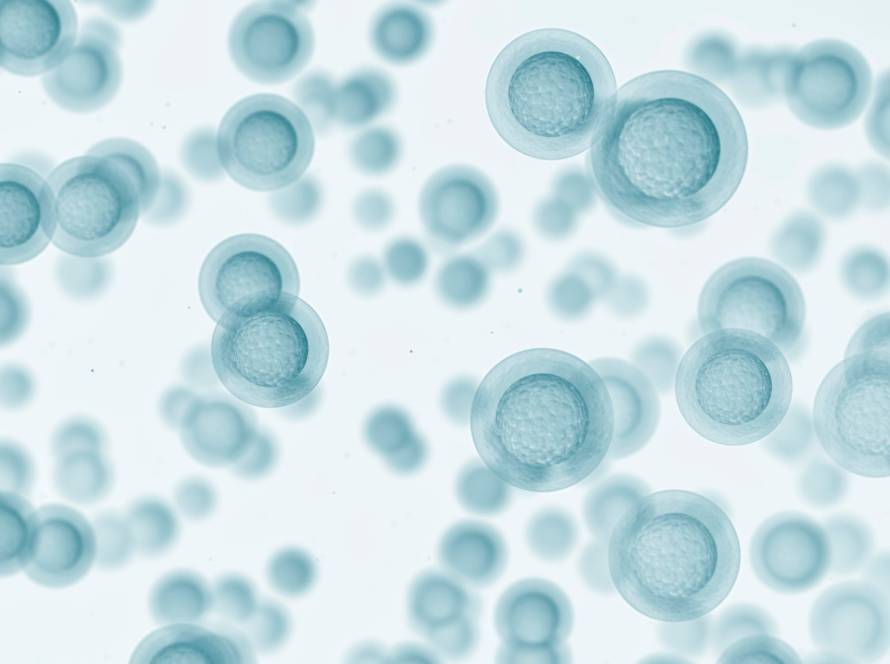Geroprotectors are treatments that target why aging happens. They help prevent diseases and decline that come with age. Many geroprotector supplements could also influence cell aging and longevity.
This piece explores these compounds’ science, their biological mechanisms and their potential to change our approach to healthy aging. Research indicates these treatments do more than just extend life, they could help us stay healthier longer.
What are geroprotectors and why they matter
Nobel laureate Ilya Mechnikov’s groundbreaking work led to the concept of geroprotectors in the early 20th century. The term literally means “protecting against aging.” These substances slow down aging processes, repair damage caused by aging and help people live longer, healthier lives.
Geroprotector definition and core criteria
True geroprotectors must meet specific criteria beyond simple anti-aging claims. They must know how to increase lifespan in multiple model organisms, improve aging biomarkers and enhance physical, mental and emotional functioning. These compounds should also slow down age-related disorders and help organisms resist environmental stressors better. Scientists have identified over 200 potential geroprotectors in various model organisms. Yet not a single one has made it to the pharmaceutical market specifically to target aging.
Healthspan vs lifespan: understanding the difference
The most important difference lies between adding years to life (lifespan) and adding life to those years (healthspan). A person’s lifespan counts the total years from birth to death. The healthspan includes the time someone stays free of major illness or disease. This difference matters deeply. Someone who lives to 100 but spends 40 years battling chronic disease has a long lifespan but poor healthspan. Another person might live disease-free until sudden death at 55, experiencing a short lifespan but relatively long healthspan.
Why aging is not officially a disease (yet)
The biggest problem in developing effective geroprotectors comes from aging’s classification status. Regulatory bodies do not recognize aging as a disease or syndrome complex. This creates a fundamental roadblock, pharmaceutical companies hesitate to develop treatments for something that isn’t classified as a disease. Many researchers now believe aging fits the definition of disease as a “harmful abnormality of bodily structure and function”. Aging causes widespread decline in physical and mental function throughout the body, which leads some scientists to promote its reclassification as a “special form of disease”.
How geroprotectors work at the biological level
Geroprotective agents work through multiple biological pathways to curb aging processes at cellular and molecular levels. These compounds step in when key mechanisms start failing during aging. They turn back the biological clock by targeting fundamental aging hallmarks.
Targeting cellular senescence and inflammation
Cellular senescence represents a nearly irreversible arrest of the cell cycle that brings profound changes in cell function. As we age, senescent cells build up and release the senescence-associated secretory phenotype (SASP). SASP contains inflammatory factors, tissue remodeling enzymes and growth factors that harm surrounding tissue. Senolytics and other geroprotectors remove these troublesome cells. Dasatinib and quercetin showed remarkable results in clearing senescent cells. This reduced age-related inflammation substantially. Other compounds like fisetin and navitoclax either disrupt survival pathways in senescent cells or make them self-destruct.
Maintaining homeostasis and stress response
Our bodies don’t deal very well with maintaining biological balance, or homeostasis, as we age. We see this in disrupted vital parameters like acid-base balance, blood pressure, glucose levels and cholesterol. Geroprotectors help maintain cellular homeostasis through hormesis. This process lets mild stressors activate defense mechanisms that reverse damage and boost protection against future stressors. Compounds like quercetin and curcumin act as hormetins. They boost stress resistance in model organisms and extend lifespan.
Modulating nutrient-sensing pathways like mTOR and AMPK
Two nutrient-sensing pathways substantially influence aging:
- mTOR (mechanistic Target Of Rapamycin): controls cell growth and metabolism; its hyperactivation speeds up aging;
- AMPK (AMP-activated protein kinase): activates during energy depletion; counteracts mTOR signaling.
Rapamycin blocks mTORC1. This boosts autophagy (cellular “self-eating”), improves stress response and reduces inflammation. Metformin activates AMPK, which cuts down glucose production and influences autophagy, inflammation and cellular senescence pathways. Both compounds extend lifespan in multiple model organisms and show promise in reversing age-related dysfunction.
Epigenetic regulation and gene expression shifts
Gene expression’s disruption with age throws off homeostasis. Epigenetic changes, alterations to DNA that preserve the sequence, accumulate throughout life. These changes create distinctive “aging clocks”. Geroprotectors can reverse these epigenetic changes by influencing:
- DNA methylation patterns;
- Histone modifications that affect chromatin structure;
- Non-coding RNAs that regulate gene expression.
Caloric restriction mimetics change cells’ epigenetic state. They return aging-associated genes’ expression to youthful levels. Compounds like nicotinamide riboside and resveratrol affect deacetylase activity. This modifies epigenetic aging markers.
Types of geroprotectors: from natural to synthetic
Scientists group geroprotectors into several categories based on their origin, development stage and biological action mechanisms. These compounds provide different ways to address aging’s complex nature.
Natural geroprotector compounds and their sources
Natural geroprotectors cover a wide range of bioactive molecules found in plant-based foods and traditional medicines. The key nutrients with geroprotective properties include polyphenols, flavonoids, essential amino acids, polyunsaturated fatty acids and plant metabolites like terpenoids. Red wine’s resveratrol, turmeric’s curcumin and green tea extracts are among the most studied natural compounds. These substances work through antioxidant and anti-inflammatory pathways to curb age-related decline.
Geroprotector supplements in current use
Available geroprotector supplements include nicotinamide riboside (NR), which increases NAD+ levels and improves mitochondrial health. Gut microflora generates Urolithin A from pomegranate ellagitannins, which boosts mitophagy and showed improved physical performance in clinical trials with 88 healthy individuals. Foods like wheat germ and mushrooms contain spermidine, which has shown promising cognitive benefits in older adults with subjective cognitive decline over a three-month supplementation period.
Multi-functional agents like metformin and rapamycin
Metformin, which doctors originally prescribed for type 2 diabetes, shows geroprotective effects in multiple species, including C. elegans, D. melanogaster and mice, according to studies. Rapamycin, an initial immunosuppressant, extends lifespan even in later life stages by inhibiting mTORC1 signaling. The combination of trametinib with rapamycin produced additive lifespan extension effects beyond either compound alone, as studies showed recently.
Senolytics and senomorphics: emerging categories
Senotherapeutics are a newer class of geroprotectors that include senolytics and senomorphics. Senolytics target survival pathways to eliminate senescent cells, dasatinib with quercetin has shown notable potential to clear senescent cells and improve healthspan scores in mice. Senomorphics, such as rapamycin and metformin, suppress the harmful effects of senescence-associated secretory phenotype (SASP) without causing cell death. Newer senolytic compounds include fisetin (found in fruits and vegetables), navitoclax and cardiac glycosides like oleandrin and periplocin.
How scientists are discovering new geroprotectors
Scientists have moved from chance discoveries to advanced methods that combine state-of-the-art technologies with traditional biological assays to find new geroprotectors. Over 200 substances extend the lifespans of model organisms. Research continues to identify compounds that could work in humans.
High-throughput screening and in silico modeling
Scientists screen vast libraries of natural and synthetic compounds, particularly those with FDA approval for human use. A significant study tested 1,280 compounds with known pharmacological properties. The results showed 60 substances increased C. elegans lifespan and 33 enhanced oxidative stress resistance. Tools like GeroScope help this process by mapping gene expression differences between young and old subjects onto aging-related pathways. Scientists can rank potential compounds by their power to restore youthful signaling patterns without knowing the aging mechanisms.
Using model organisms like C. elegans and Drosophila
Model organisms are perfect test subjects for potential geroprotectors because they have short lifespans and adaptable genetics. C. elegans (roundworms), Drosophila (fruit flies) and yeasts help scientists quickly assess lifespan extension properties. The PICLS (plate-based imaging of C. elegans lifespan) method allows faster testing. Scientists found that fruit flies treated with pectins lived longer due to increased NF-κB signaling and activated stress resistance genes. These organisms show both mechanisms and results.
Transcriptomic and proteomic signature matching
Gene expression patterns linked to aging help identify geroprotectors. The ANDRU (aging network based drug discovery) method spots human aging subnetworks between aging and age-related diseases. It then looks for ways to reverse age-related transcriptional changes. Scientists have also created age classifiers using machine learning on human tissue transcriptomes. These rank compounds by their ability to create “youthful” transcriptional states. This method identified two Hsp90 inhibitors, monorden and tanespimycin, which extended C. elegans lifespan.
AI and machine learning in geroprotector discovery
AI has sped up geroprotector discovery. AgeXtend, a multimodal AI prediction tool, examines huge compound libraries to find potential geroprotectors. It explains their mechanisms, predicts toxicity and identifies protein targets. The system has screened approximately 1.1 billion compounds and predicted known geroprotectors like metformin and taurine accurately. Deep neural networks trained on transcriptional response data can predict side effects of candidate geroprotectors. This streamlines the process from discovery to clinical use.
Geroprotector research represents a radical alteration in science’s approach to aging. These compounds target the fundamental biological processes that drive aging itself instead of just treating individual age-related diseases. Scientists now have a foundation to develop interventions that extend both lifespan and healthspan by understanding how geroprotectors work, from cellular senescence modulation to nutrient-sensing pathway regulation.


